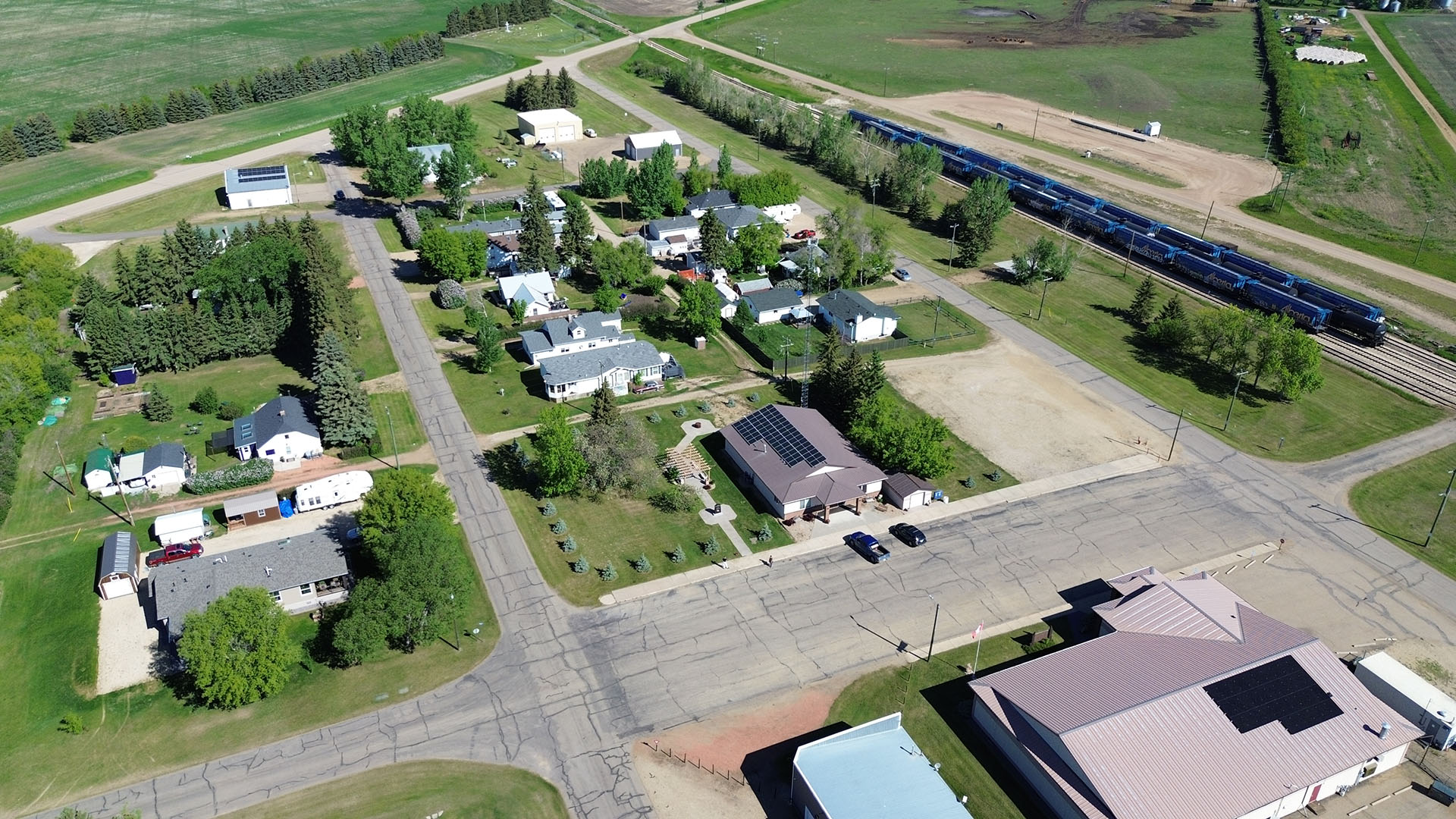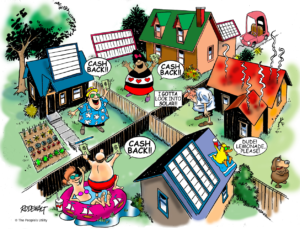[Camrose, Alberta] – [June 12, 2024] – Rosalind, a vibrant village in Alberta, is making history as Camrose County’s first Net Zero community. Their path to clean energy leadership involved not only embracing solar power but also pioneering the concept of aggregation for rural communities.
A Catalyst for Sustainability: Municipal Funds and Prudent Management
Rosalind’s journey to Net Zero began with a unique opportunity. The village received a notification that they had unspent funds allocated from the municipal enhancement fund. Faced with the choice of utilizing these funds for village improvements or returning them, the village council embarked on a path towards a sustainable future.
Nancy Friend, spokesperson for the Village of Rosalind, highlights their commitment to fiscal responsibility: “Our village has been run by a financially prudent council,” she says. “Our taxes have not gone up in the last 11 years I have worked here for 19 years.” With well-maintained infrastructure and paved roads, the council sought a long-term investment that would benefit the village for years to come. Solar power emerged as the ideal solution, offering both environmental and financial advantages.
Achieving Net Zero with Solar Power
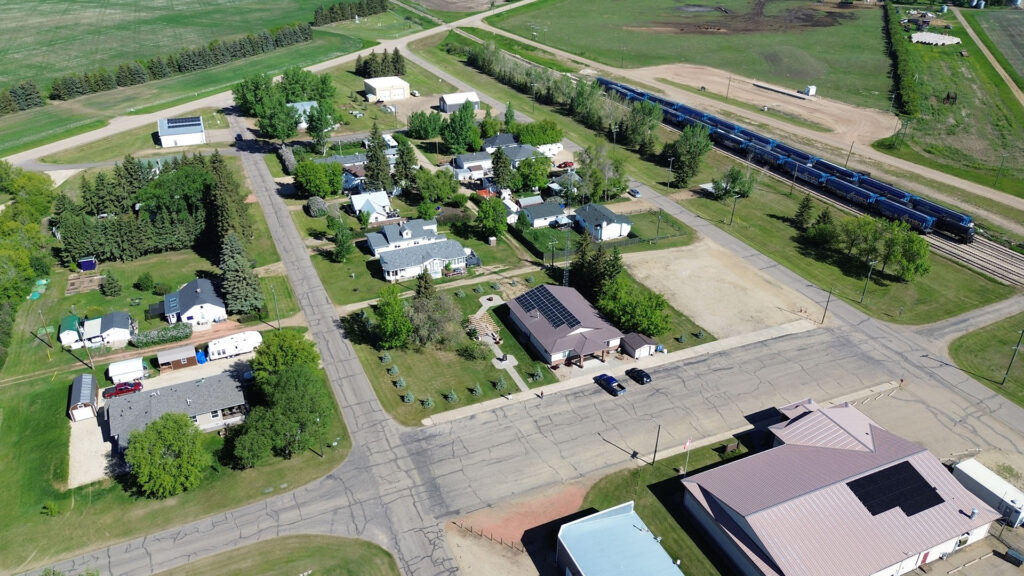
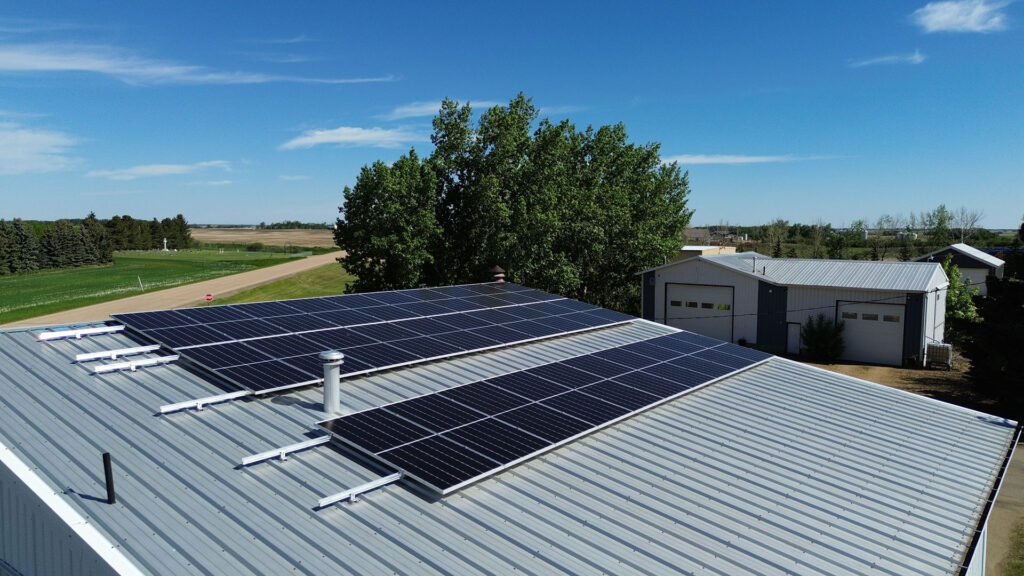
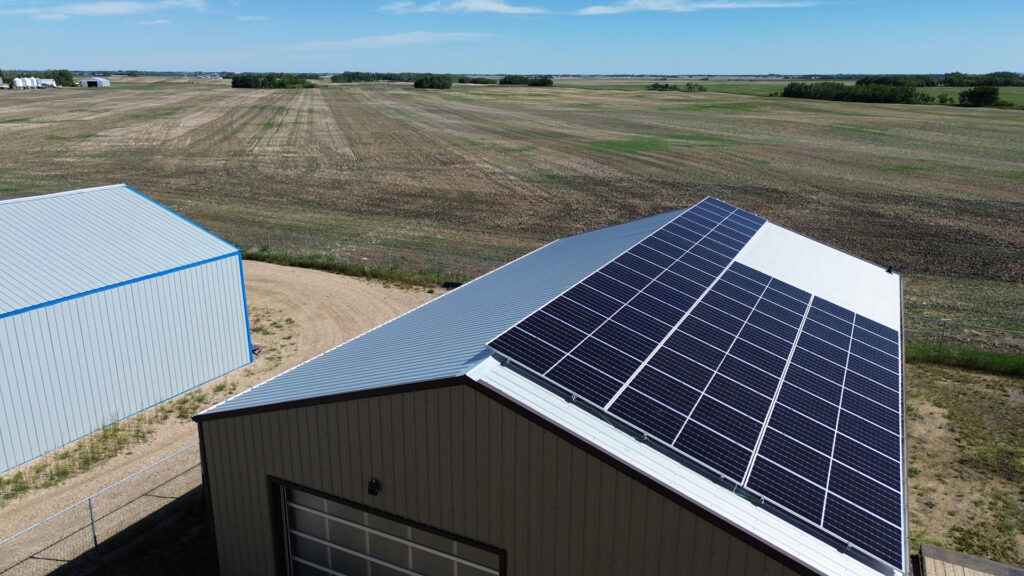
Rosalind’s path to Net Zero began with the installation of four impressive solar arrays across key village buildings:
-
- 13.824 kW system on the public works building
-
- 13.824 kW system for the village office and drop-in center
-
- 13.824 kW system on the community hall
-
- 11.52 kW system on the fire hall
These strategically placed solar arrays are expected to generate enough clean electricity to power the needs of the municipal buildings and services throughout the year.
Maximizing Solar Returns: The Power of Aggregation in Rosalind’s Net Zero Journey
Kevin Yuha, from Yuha Electric, the solar installer on this project acknowledges that advocating for Rosalind to leverage aggregation was a lengthy process. However, their perseverance paid off, paving the way for a more efficient and impactful solar solution.
What is Aggregation?
Aggregation involves combining the electricity usage of multiple locations under the same ownership into a single account for solar power generation. In Rosalind’s case, the historical electrical usage of their water plant, lift station, and street lights was aggregated with the planned solar energy production.
Benefits of Aggregation for Net Zero
Here’s how aggregation empowers communities like Rosalind to achieve Net Zero:
-
- Optimal System Sizing and Placement: By considering the combined electricity needs of all facilities, the solar arrays can be strategically placed to maximize efficiency. This might involve locating them at sites other than the facilities with the highest historical usage, depending on factors like roof space and sun exposure.
-
- Reduced Reliance on Hi Solar Club™ Rates: Aggregation allows negotiation of a larger solar capacity. Strategically placing the solar arrays can further reduce reliance on potentially higher rates from programs like Hi Solar Club™, especially for locations with higher electricity usage. This combined approach can lead to a higher overall return on investment for the solar system.
Can Aggregation Work for You?
While aggregation offers significant advantages, there are specific requirements to consider:
-
- Landownership: All participating locations must be under the same ownership for aggregation to be possible.
-
- Utility Provider: Consistent electricity service from the same provider across all locations is necessary.
-
- Electricity Retailer: All sites must share the same electricity retailer to facilitate aggregation.
Rosalind’s example demonstrates the power of a well-planned solar strategy. By using aggregation and integrating various facilities, the village paves the way for a sustainable future for its residents.
Environmental Benefits of Net Zero
By transitioning to Net Zero, Rosalind is not only reducing its reliance on fossil fuels but also making a significant positive impact on the environment. This translates to an estimated offset of 29.4 metric tons of CO2 annually, which is equivalent to:
Using
-
- Driving: 120,979 kms in a gasoline-powered car
-
- Household Electricity: Powering 8 average homes for a year
Offsetting
-
- Forestry: Conserving 34.3 acres of mature forest
-
- Tree Planting: Growing 486 tree seedlings for 10 years
Looking Ahead: A Model for Rural Communities
Rosalind’s journey towards Net Zero serves as a powerful inspiration for rural communities across Canada. By embracing solar energy and innovative solutions, even small towns can become leaders in sustainability and create a lasting positive impact on the environment.
About the Village of Rosalind
Rosalind is a vibrant village located southeast of Camrose, Alberta. With a population of around 180, the village is known for its strong sense of community. Where their motto is Small but Strong.
Inspired to explore the potential of solar and aggregation for your community or your farm?
Contact Camrose Energy at (780)781-4115. We love to talk solar! Our team can help you assess your options, including the possibility of combining aggregation with programs like Solar Club™ to potentially shorten your payback period and maximize the return on your solar investment.
Together, let’s build a brighter, more sustainable future and reducing your utility costs at the same time.

